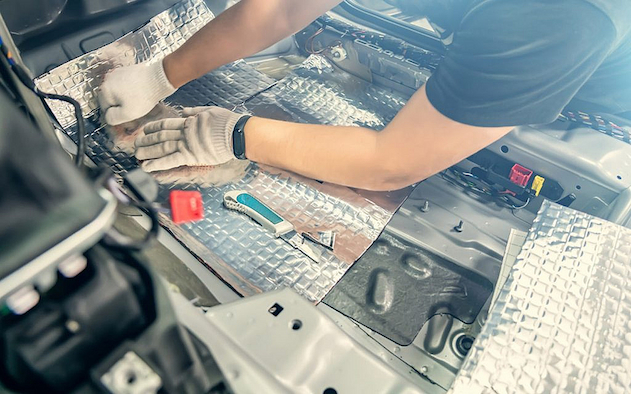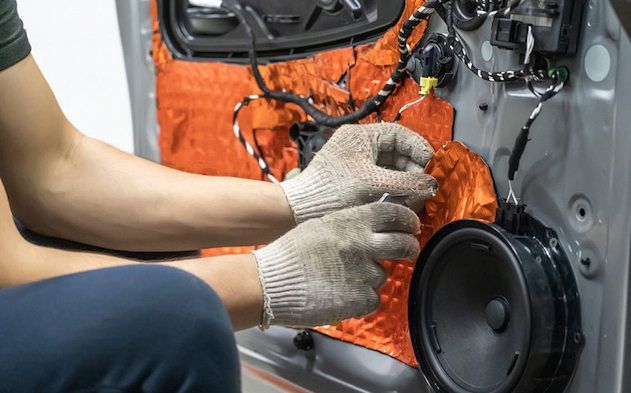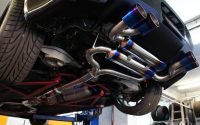Sound Deafening Materials to Bring Your Car’s Interior Noise Down to the Ideal Level
Driving a car should be a comfortable experience, yet noise pollution inside the cabin can often disrupt this comfort. Older vehicles in particular tend to suffer from this issue, as wear and tear over time can erode the car’s built-in soundproofing measures. Excessive noise not only makes for an unpleasant ride but can also contribute to driver fatigue and distraction, potentially increasing the risk of accidents. Fortunately, advancements in sound-deafening materials offer a solution to reduce cabin noise effectively, making your rides quieter and more enjoyable.
The Impact of Noise in Your Car

The noise inside your car can come from various sources: the roar of the engine, the hum of the tyres on pavement, wind, and even the rattling of aged vehicle components. In older cars, these sounds can be particularly pronounced, leading to a cacophony that makes it hard to enjoy music, hold conversations, or even think clearly. This ongoing exposure to noise not only diminishes your driving experience but can also have long-term effects on your hearing and overall well-being.
Understanding Sound Deafening Materials
Sound deadening materials, often referred to as sound deadening or damping materials, are specifically designed to reduce the noise entering or existing within a confined space like a car. These materials work by absorbing sound waves, reducing their amplitude, and converting the sound energy into a small amount of heat. The most common types of materials used for soundproofing in vehicles include mass-loaded vinyl (MLV), closed-cell foam, and butyl rubber. Each of these materials has unique properties that make it effective at handling different types of noise frequencies, from the low rumble of an engine to the higher-pitched road noise.
Where to Install Sound Deadening Material in Your Car
To maximize the effectiveness of sound deadening, it’s crucial to target multiple areas within your vehicle where noise penetration is significant. Here are the key places to install these materials and how each contributes to noise reduction:
Doors

The doors are one of the primary entry points for external noise. Adding a layer of sound deadening material inside the door panels can dramatically reduce the noise from the road and wind. This not only improves the clarity of your car’s audio system but also creates a more serene environment for conversation and thought.
Floor
The floor of your car is directly exposed to the noise from the road and the vehicle’s undercarriage. Applying sound deafening mats under your carpets can significantly cut down on vibrations and airborne noise. This creates a quieter cabin, especially beneficial in reducing the exhausting drone that can permeate older car models.
Roof
Noise from wind, and rain can be particularly disturbing when it hits the roof of your car. Lining the roof with a thin layer of soundproofing material can help soften this noise, contributing to a more relaxed driving experience.
Firewall
The firewall separates the engine compartment from the cabin and is a critical area for soundproofing. Enhancing the existing soundproofing on the firewall with high-quality materials can significantly reduce engine noise, making conversations and audio from your stereo system clearer.
Trunk
Noise from your vehicle’s exhaust and traffic following you can enter through the trunk. Soundproofing this area helps to mute these disturbances, stabilizing the acoustic environment of your car.
Installation Tips
Installing sound deafening materials can be a DIY project if you’re comfortable with basic car maintenance tasks. Here are a few tips to ensure effective installation:
- Clean Surfaces: Before installation, ensure that all surfaces are clean and dry to help the materials adhere properly.
- Measure Twice, Cut Once: Measure the areas where you’ll apply the material and cut it to fit snugly, avoiding gaps that can let sound through.
- Overlap Edges: When laying down materials, slightly overlap the edges to create a continuous barrier against noise.
Conclusion: Achieving the Ideal Noise Level in Your Car
With the right sound deafening materials, you can significantly reduce the noise inside your car, transforming your ride into a haven of tranquillity and comfort. This not only enhances your overall driving experience but also protects your health and safety by reducing distractions and fatigue. Whether you choose to tackle the installation yourself or have it done professionally, the benefits of a quieter cabin will be worth the effort. Enjoy your quieter, more peaceful rides and rediscover the joy of driving.



